Want to jump straight to the answer? The best ATS for most people is BambooHR.
Applicant tracking software (ATS) organizes every aspect of finding and signing the most qualified people for your company.
To find the best applicant tracking software options, we did a deep dive into the top solutions on the market today. After we identified the top tools, we reached out to active users of each ATS to find out how well these products work in the real world.
In conversations with hiring managers, recruiters, and HR directors who depend on these ATS tools, we were able to get a much better sense of why these tools worked so well–and where they fell short.
The 4 Best Applicant Tracking Software Tools
- BambooHR – Best for HR Teams that Handle Recruiting Themselves
- Workable – Best for Filling A Niche Position Quickly
- BreezyHR – Best for Lowering Your Cost to Hire
- JazzHR – Best for Companies That Are Always Recruiting
It’s a job-seekers market right now–there are many more open roles than there are qualified candidates to fill them. Creating a frictionless hiring process is vital for companies that want to bring the best people on.
Below, you’ll find in-depth reviews of the 4 best ATS platforms on the market. I’ll cover where each platform excels, where it could improve, and how much it’s going to cost to get started.
You’ll find that my top picks allow you to get started for free, and BreezyHR even offers a free forever version that works fine for small-scale hiring.
An ATS is going to save you a lot of time on hiring–I’m confident of that after speaking with users. It’s definitely worth a little bit of time now to explore your options. Take one of these ATS tools out for a spin and see how quickly you can fill an open position.
BambooHR – Best for HR Teams that Handle Recruiting Themselves
- End-to-end HR + recruiting software
- User-friendly for recruiters and applicants
- Mobile hiring app
- Huge list of integrations
BambooHR offers a very handy ATS as part of its full suite of HR products. It’s an extremely user-friendly platform that offers small businesses the ability to centralize recruiting and HR under a single roof.
As an ATS, BambooHR offers all of the core tools. HR professionals we talked to had no problems finding high-quality applicants using the platform. Coordinating with candidates and other managers was no issue either.
The users we spoke with used BambooHR as their human resources information system (HRIS). Other options on my list may work better as a standalone ATS platform, especially if you already have an HRIS you’ve invested in.
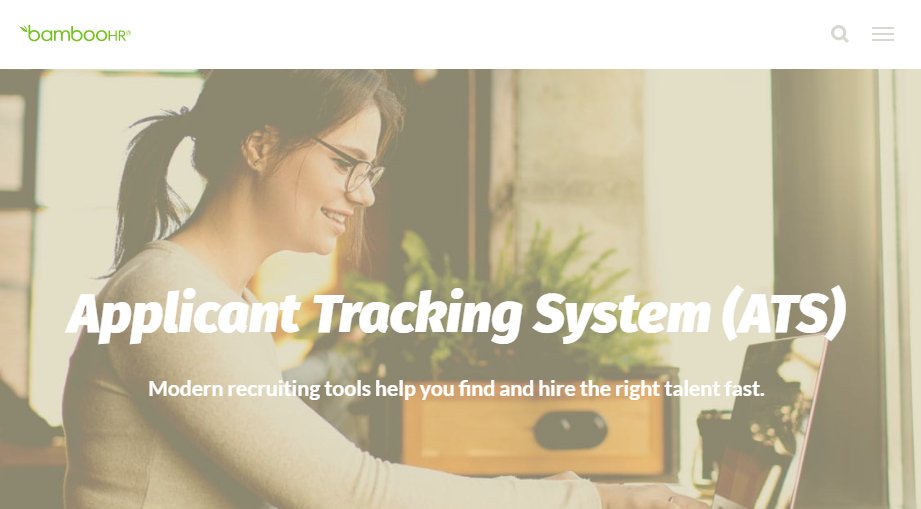
Where BambooHR Excels
If you have one team or department that handles both the recruiting process and ongoing HR management once employees arrive, I’d seriously consider BambooHR. It offers a complete HR toolkit and a seamless experience for employees:
- Users adore it: Applicants find Bamboo as easy to use as recruiters. Everyone we spoke to loved the platform’s intuitive feel and how effortless it was to collaborate with other teams and departments.
- Exceptional onboarding tools: As a full-service HR software platform, BambooHR lets you transition new hires seamlessly into employment. These go beyond the standard eSignature tools to provide comprehensive onboarding and new hire training.
- Great app marketplace: While BambooHR offers a relatively trim number of built-in recruiting features, there are plenty of additional job board integrations, assessment tools, background checks, etc. available through pre-built integrations.
We’ve covered BambooHR’s capability as an HRIS in our review of best HR software, so we’ll be focusing specifically on the ATS here.
Users said it was remarkably straightforward to use. “Bamboo is just simple. It’s streamlined,” said one user. “You don’t need programmers and IT personnel to run it.” Candidates are easy to track, and collaborating across the company to make a smart decision was no problem.
For the HR director of an online university, it’s very helpful to have all communication logged in a single candidate profile: “My managers are already in Bamboo and I just have to give them access, and then they can sort and rank all of the applicants within the ATS.”
He also really liked that managers could see all the notes and emails exchanged between Bamboo HR and the applicant. This kind of conversation logging is standard in the world of ATS, but because BambooHR is his HRIS, any manager he needs to coordinate with is already in the system.
“If we need to bring somebody else in,” he said, “I can just quickly add another manager or somebody to that particular job posting and they can review and look at those applicants.”
The ease of use translates very well to BambooHR’s mobile app. Unlike some ATS, little is lost between the desktop and mobile versions. Breezy’s app wasn’t quite as slick, for example, and. JazzHR doesn’t even have an app.
On BambooHR’s app, you’re able to search candidates, screen resumes, and collaborate with your team.
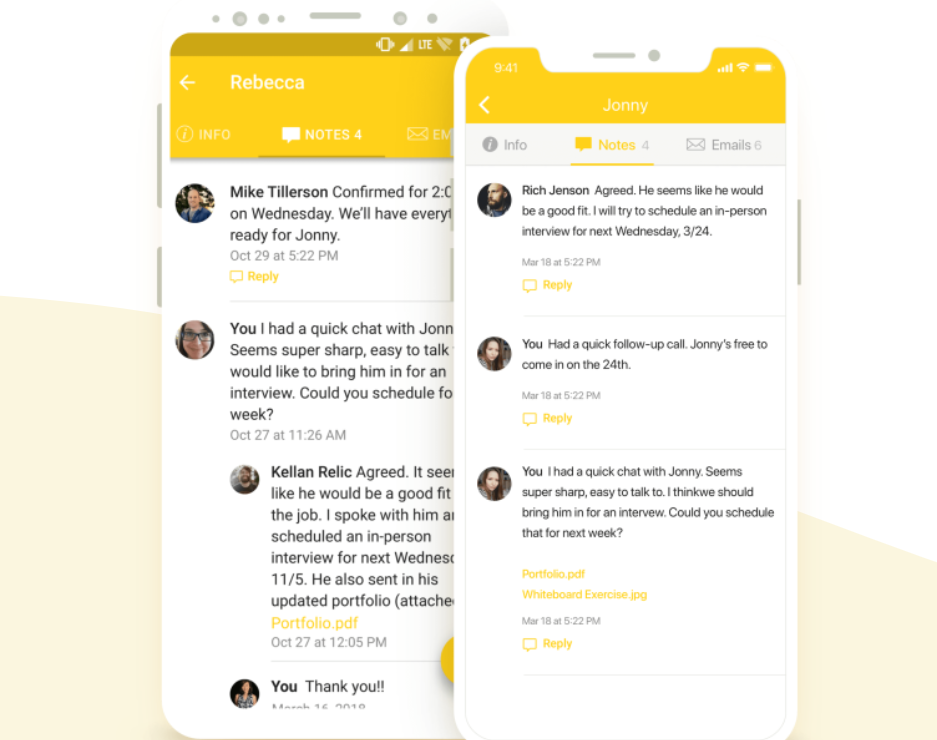
You can also rank candidates based on star ratings, leave comments, and tag other colleagues. It’s a fairly standard set of tools, but it was more than enough for people we talked to.
As the HR director explained, “starring” candidates on the five-star rating scale was a fast and effective way to share impressions about potential hires. “Our IT manager is screening [to ensure] they’ve met the qualifications for this particular piece,” he explained, and then his team “comes back through to schedule interviews.”
And when they do make an offer to a candidate, recruiters using BambooHR have access to a very impressive range of onboarding tools.
Users liked the new hire packets that BambooHR makes it easy to compile. “Onboarding for us is a lot,” one user said. They described documentation policy, an employee handbook, and a long list of acknowledgments and tax information. BambooHR lets you view and track all this information to ensure there are no gaps or mistakes.
| PROS | CONS |
| Complete HR toolkit for onboarding | ATS not available without a premium plan |
| Mobile app designed for recruiters | Essential job boards only |
| Robust app marketplace | No built-in video conferencing |
Where BambooHR Can Improve
As excellent as Bamboo is, there are a few things to think about that might put another one of my recommendations ahead of it:
- Limited job board integrations: You can post on the standard job boards and social media sites, but that’s about it. More are available via add-ons, but other ATS tools have a lot more venues built-in.
- No standalone ATS: You can’t purchase just the ATS from BambooHR, so it might be problematic if you already have another HRIS.
- Video conferencing issues: Users noted issues getting the video conferencing integrations to work as advertised, and BambooHR doesn’t offer anything built-in.
First off, BambooHR definitely works best if you are using it as your HRIS. While it might be possible to just use the BambooHR ATS and plug it into your larger HR framework, we haven’t talked to anyone who does that.
If you already have software you like for payroll, time off, and basic employee administration, you might be better off with a standalone ATS such as Breezy, Jazz, or Workable.
Another big issue was the relatively sparse number of job boards available out of the box. Whereas Workable has 200+, BambooHR just has a handful: LinkedIn, ZipRecruiter, Glassdoor, Facebook, and Twitter.
As a result, some users we spoke to had to use add-ons to broadcast vacancies in the right places.“We ended up adding an add-on called ApplicantPro,” the HR director for the online university told us, because “they post to local job boards like chambers of commerce and colleges.”
We didn’t hear that all integrations and add-ons worked smoothly, either. Video conferencing, for instance, was tricky for some users. Some encountered glitches–whether this was problems with their network or BambooHR was uncertain, but the video didn’t “just work.”
One user wanted to incorporate Zoom (not one of the pre-built integrations on the BambooHR marketplace), but couldn’t figure out a way to get it tied into their interview schedule.
“I do think scheduling would be kind of nice,” he said, “with a calendar thing where it’s like, Hey, here’s the slots that are available, go and fill that out.”
Some other platforms, like Workable, have a built-in ability to allow candidates to self-schedule interviews. With BambooHR, setting up this feature will require integration with an additional service, which means more money, setup, and a greater chance of things going wrong.
Finally, it’s worth noting once more that BambooHR gives you an entire HRIS, not just the ATS tool–and that may be more than you need.
If all you really need is an ATS, you may find it easier to implement one of the other solutions on my list.
BambooHR Pricing
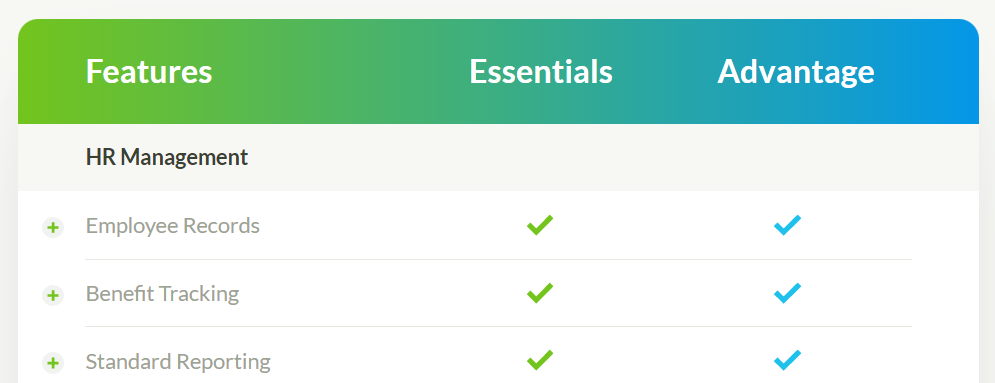
BambooHR offers two plans, but does not release their pricing, so you’ll have to follow the links to get a quote.
As we noted above, the Essentials plan does not come with the ATS included, so you’ll be looking at an Advantage plan only.
This package comes with every ATS feature we’ve mentioned, in addition to a core HR toolkit for employee records, PTO, org charts, workflows & approvals, and audit trails.
There is no need to upgrade beyond Advantage, though you may want to increase the number of job boards in play, add video integration, or otherwise extend the platform through the app marketplace. This will be an additional cost.
Get in touch with BambooHR today for a custom quote and try the platform free for seven days.
Bottom line: BambooHR lets HR teams lay strong recruiting, tracking, and onboarding foundations for their companies.
Workable – Best for For Filling A Niche Position Quickly
- Per-hire payment plans available
- Post to 200+ job boards
- Automated candidate recommendations
- Excellent Chrome extension
When it seems like the familiar avenues for finding great hires aren’t getting you where you need to be, Workable has your back. It offers a gigantic database of candidates and one-click posting to over 200 job boards.
You don’t have to invest much time (or money) into Workable in order to find candidates who match your company’s needs and values. So long as it plugs into your other HR software–which is a big consideration–Workable lets you up your recruiting game with minimal disruption.
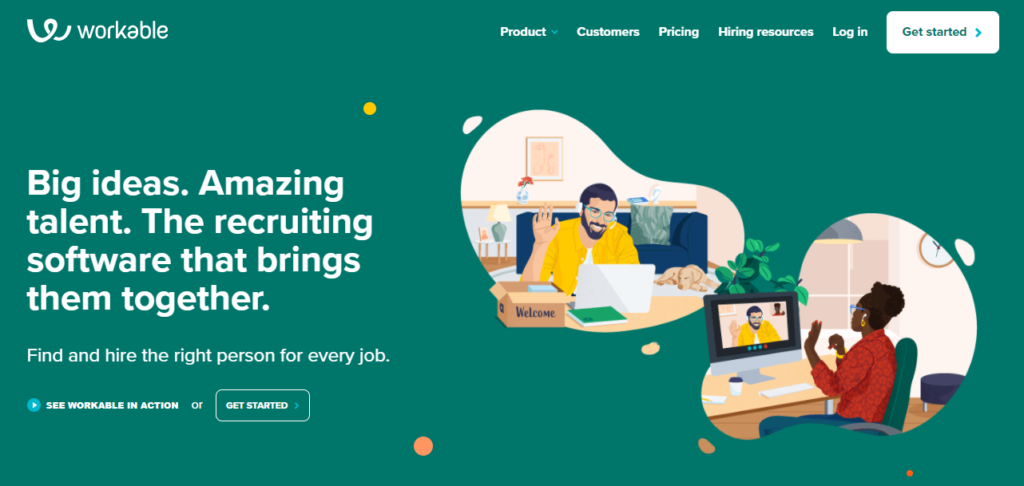
Where Workable Excels
As a standalone ATS, it’s meant to integrate with the tools you already use, not force you to jump ship to a bigger more expensive service over time.
Workable also focuses on applicant tracking entirely, so while you don’t get as many HR-adjacent built-in services, the tools you get for finding, ranking, and signing candidates are some of the best in its class.
- Automatic AI sourcing: Workable automatically generates a list of 50 “best fit” candidates based on millions of past job search interactions.
- Handy Chrome extension: This in-browser feature is great for pulling contact information and other context about promising candidates without switching screens.
- Diverse job board selection: Workable has more than 200 job boards you can use to start getting the word out.
Recruiters that need to fill a lot of different roles for their company are going to love Workable. Creating professional job descriptions is simple, and on the backend you can really fine-tune exactly what you are looking for.
Workable touts its AI Recruiter tool, which automatically recommends the top 50 best passive candidates for any job you post. It only takes about two minutes for AI Recruiter to provide the list.
We’re always suspicious of AI or machine learning anything, as these words get tossed around a lot without proof of effectiveness, but whatever Workable is doing on the backend really seems to be helping people out. One Workable user told us that their previous ATS would constantly put forward ill-fitting resumes from Indeed, but Workable solved the problem.
“We still post to Indeed, but the stuff that’s coming through at this point is just higher,” he said. “You have to screen less people and it’s like, that’s really the thing I think about at the end of the day.”
This was a huge deal to us. Posting to a million job boards isn’t a silver bullet, and we read a lot of reviews for ATS software (that we ended up not recommending) where people had a hard time keeping track of the flood of applicants. Workable gives you a great interface to manage tons of postings, and effectively screens resumes so your recruiters don’t have to.
It’s going to work just fine for filling a pipeline with entry-level hires, but when you are really trying to acquire specific talent to meet niche challenges, Workable gives you the edge.
Users liked how much information was available via the People Search tool. Especially using it in Chrome with the Workable extension.
This extension is a phenomenal contact and email hunter, which you can use on LinkedIn, Facebook, or just browsing the web. Once a candidate is identified, you get a complete and detailed picture of their online presence.
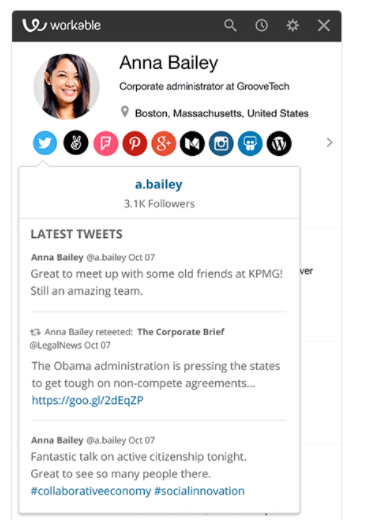
This kind of context is really important. “If the resume looks good, I can do a little bit of poking around,” explained one user, talking about how well Workable pulls information from people’s social profiles. “Would I enjoy my job if you were working for me and I had to talk to you every day?” Now he can find out before the first interview.
Users also reported no issues collaborating with their team or across departments. “It’s very easy to understand what other people have done,” said one user. “I can go and look at all the conversations [my colleague] had with the candidates and stuff like that if I want to.”
The HR manager appreciated how easy it was to get feedback from the different hiring teams. “They could comment or they could share profiles with me if they wanted me to really look at one quickly,” she said. It was easier to capitalize on the momentum, and there were fewer miscommunications because the correspondence could be seen by everyone.
I’ll go more in-depth on the Workable Pricing below, but the pay-as-you-go plans are very attractive to folks that need a high-powered ATS, but don’t need it 365 days a year.
One user who managed HR at a 40-person company said Workable said it was perfect to use as they needed it. “We didn’t know how many jobs we would have,” she said. “So we couldn’t really commit to a whole huge system.”
| PROS | CONS |
| Post to 200+ job boards | DEI features with premium plans only |
| Pre-built job descriptions | Modest number of HRIS integrations |
| AI candidate sourcing | Imperfect screening results |
Where Workable Can Improve
Workable has some room to grow and occasionally we heard about features that users would have liked to see:
- Limited HRIS integrations: Because it’s a standalone ATS, more pre-built integrations would be nice, or at least making CSV exports available on the entry-level plan.
- Better resume management: Searching and managing resumes on the backend was not quite as streamlined.
- Hit-or-miss screening: It wasn’t always easy for users to disqualify candidates early in the process.
Full disclosure: We really had to pry in order to get people to talk about what they didn’t like about Workable. It wasn’t a perfect experience for the users we talked to, but neither were they chomping at the bit to tell us all the things they didn’t like.
One director of customer success wished Workable could be more precise about how it screened resumes. “You get a lot of people applying to customer success jobs that previously have done either customer support or just customer service, which is not the same thing,” he explained.
You can see how this mix-up would happen on the part of candidates who were unfamiliar with customer success–but you can also see why the director wished that Workable would help screen that out.
Other users had trouble with location-based searching if they had multiple locations for the same role.
Other little things that stuck out to users included having trouble setting reminders or scheduling rejection emails. “You want to close out a candidate or you want to reject them,” one user said, “but you don’t want to do it at five o’clock on like Thursday or Friday. That’s hard on your candidates.”
BambooHR makes it easy to schedule emails to go out the following week, whereas it was on the wishlist for Workable users.
One of the things that Workable highlights in its copy is the ability to take on workforce initiatives like diversity, equity, and inclusion (DEI). And Workable does offer anonymized screening, voluntary surveys, and purpose-built reports to help to create an EEO/OFCCP compliant application process–but only with their two top-tier plans.
Currently, if you use the pay-per-hire plan, or even their entry-level Core plan, you won’t get most of the features necessary to build a hiring process that lives up to those standards. Workable is hardly the only ATS not to offer these features as part of affordable plans, but I hope they do soon.
Workable Pricing
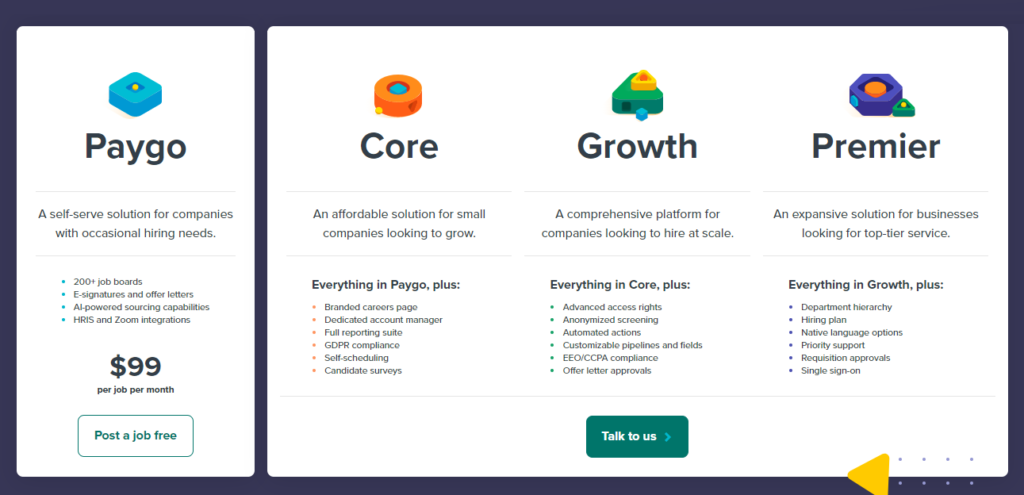
Workable offers a very powerful self-serve version of their ATS for a flat rate of $99 per job per month. This Paygo plan is going to work well for people that don’t need to hire very often, because they get a complete system that’s ready the moment they log in–even if their last login was six months ago.
Paygo comes with
- All of the job board integrations
- AI Recruiter
- eSignature and document management
- HR software integrations
Note that you are often stuck paying for the most expensive plan on many other platforms if you want the integrations, built-in eSignatures, offer letter templates, and premium job board access. Workable includes that all for a predictable cost per hire.
Workable is a lot less transparent about their pricing for their annual plans. Users told us they were spending far less per hire than they would with the Paygo plan (closer to $50 per), but we were not able to confirm whether this was typical.
Still, you’ll want to go with one of the annual plans if hiring is an ongoing thing, as you get the key administrative features that matter when you always have a few open roles.
Along with a branded career page, the Core plan provides better reporting and access to a dedicated account manager. You’ll also be able to collect candidate surveys and offer them the ability to self-schedule.
Growth and Premier come with additional compliance features, anonymized screening, and tools that help companies promote workforce initiatives. You’ll have to get in touch to see exactly what it’s going to cost to get what you need.
Or you can use the Workable Paygo plan as nothing more than a top-tier ATS, the shortest distance between you and the candidate who’s going to end your search.
You can start using Workable’s best-in-class job posting tools free for 15 days, or get in touch to request a demo of the full platform.
Bottom line: Workable is always ready when you need to find a few good candidates fast.
BreezyHR – Best for Lowering Your Cost to Hire
- Free forever version available
- Unlimited users and candidates
- Built-in video conferencing
- Easy for new users
Any decent ATS is going to save you money, especially if you’re currently going off spreadsheets and memory. But if you are really trying to keep costs down, BreezyHR is my top choice.
As a battle-tested, extremely popular recruiting platform, BreezyHR offers a free forever ATS you can start using right away, and predictably priced upgrades when you’re ready for more.
I like it because despite the low cost, BreezyHR doesn’t cut corners. It’s a little lighter on built-in HR tools than its name might suggest, but in terms of key ATS functions, BreezyHR gives you more for less than any other platform.
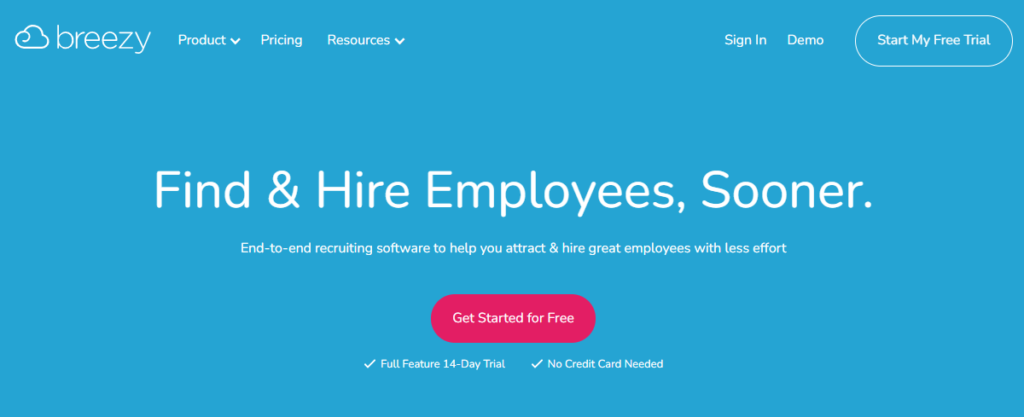
Where BreezyHR Excels
You’ll find everything you need for recruiting built right into the BreezyHR platform as soon as you log in to your free account.
- Extremely simple to use: What it lacks in customization compared to the deeper platforms, BreezyHR more than makes up for with a near-zero learning curve, even for your least tech-savvy users.
- Great in-platform communication: No need to integrate or log in to third-party services. You can chat with colleagues, comment on candidates, or video conference with new hires for screening and group interviews–all right in the platform.
- Scales well for SMB: BreezyHR is easy to use whether you have two or 20 open roles. You can do more while keeping it simple.
BreezyHR minimizes the work you have to do in order to set up a completely objective, trackable hiring process. It doesn’t assume you are an HR guru, have recruiters working in-house, or have a web developer on standby.
On the free platform, you get an ATS that lets you track one position at a time. For that position, you get unlimited users, unlimited candidates in your database, and more than 50 job board integrations to start. You also get a branded career site that’s customizable and mobile-friendly.
With many other ATS options, you’re paying more to add users, candidate profiles, or to set up a career site. With BreezyHR, that’s all free.
It’s literally everything you need for a basic ATS, and users we spoke with had no trouble using BreezyHR right away. “When I used it for the first time, I didn’t need help,” said one HR manager. “I could just figure it out as I went along.”
She and other users like that everything is contained within the Breezy platform. “There’s no way to lose track of where you are with anything, and you’re not having to hunt around in your own email or within Slack.”
Since you never have to pay for extra seats, BreezyHR lets you loop everyone into the hiring conversation without having to think about licensing. Collaboration was very straightforward, even when companies were dealing with a lot of open roles on different teams.
One HR manager hiring for about 20 different open positions talked about how simple it was to qualify applicants and move them through the process. She liked the ability to “work with other teammates and see exactly where candidates are in the stages for each other, about our thoughts on each candidate.”
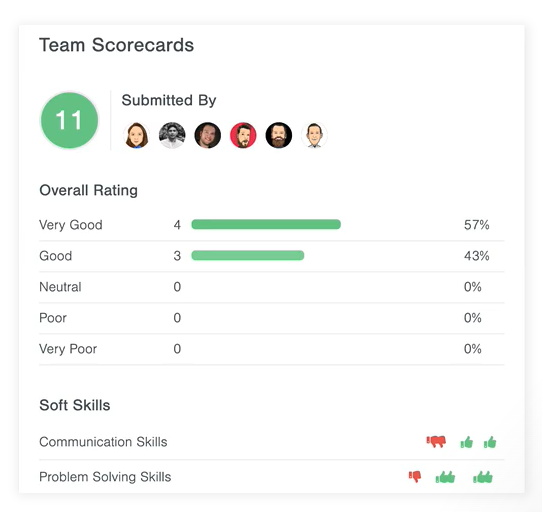
In BreezyHR, everyone gets a vote. In addition to your typical star rankings, Breezy lets you create individual scorecards to see where everyone stands. Get feedback on every area you care about–it’s all stored with the candidate’s profile.
One other thing I want to be sure to call out with BreezyHR is the built-in video offerings. This isn’t just one-way video interview snippets, but full video conferencing software built into the platform. You don’t have to worry about third-party integrations, as you do for Workable and BambooHR.
More and more companies are using video interviews to find the right candidates and make tough decisions. There’s a lot you can get out of talking with someone that isn’t captured in a resume or cover letter. With BreezyHR, high-quality video is one less thing you have to worry about buying.
| PROS | CONS |
| Free ATS with branded career site | Limited customizability |
| Unlimited users and candidates | HRIS integrations only with top-tier plan |
| Video integration just works | High cost to upgrade beyond free plan |
Where BreezyHR Can Improve
With any platform that’s easy to use and affordably priced, you’re going to encounter some unsurprising tradeoffs:
- Limited ability to customize: Although the users we spoke to were happy with what they could do, there’s definitely less of an ability to customize questionnaires, workflows, and automations, especially with entry-level plans.
- Gated features: HRIS integrations and eSignatures only come with BreezyHR’s most expensive plan.
- High upgrade price: Moving from the free version of Breezy to their entry-level plan is a considerable jump in monthly cost.
Companies could certainly scale with BreezyHR, but we didn’t hear so much about customizing workflows–it was more staying within the bounds of a simple system.
That has its benefits, but we were surprised to hear that a lot of users found the reporting somewhat limited. Some people wanted more ability to customize reports or pull data from additional sources.
There are not an overwhelming number of pre-built integrations with HR and payroll software, and they only come with BreezyHR’s most expensive plan. It’s not the end of the world having to manually transfer your new hires into whatever system you’re using, but it would have been nice to see the option available to more users.
Likewise, some of the really useful administrative features for approvals, candidate management, and eSignatures that only come with the top-tier Business plan. Starting at around $400 per month, that’s going to be prohibitive for a lot of smaller companies that want to use the BreezyHR platform for end-to-end recruiting.
It’s not the end of the world, but in terms of keeping costs down, it’s surprising that Breezy includes so many HR-adjacent functions that companies will need to purchase elsewhere.
I’ll go more in-depth about the price below, but many users had trouble getting their minds around the price hike to upgrade. Free is great, but the next step up is $143 per month. You may well use BreezyHR for free for months or even years, and fall in love with the platform, but get priced out when you want to open a second role.
BreezyHR Pricing
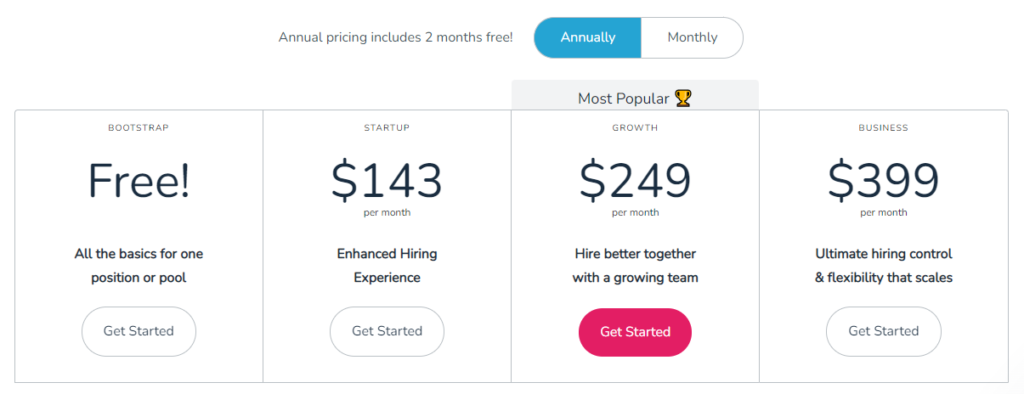
BreezyHR offers a freemium plan, Bootstrap, as well as three paid plans with additional features and hiring tools that are useful at scale.
The Bootstrap plan includes:
- Unlimited users
- Unlimited candidates
- One open position or talent pool at a time
- Branded career site
- Post to 50+ job boards
- GDPR compliance
- Resume parsing
- Multi-language support
- Email and web support
With the free plan, your key limit is that you can’t hire for more than one position at a time. That is an important limit to consider, but at the same time, BreezyHR is giving you a branded career site, multi-language support, and compliance tools. You can spend hundreds of dollars a month on an ATS and still not get everything Breezy throws in for free.
That said, upgrading to Startup is also the only way to access many of the excellent features I described in my review, such as video meetings, self-scheduling, candidate questionnaires, and the ultra-useful email and calendar integrations.
It’s a price hike from Bootstrap to Startup, sure, but it’s still squarely in the “affordable” camp when you look at similarly popular and powerful ATS options.
Notably, you have to upgrade to Growth or Business in order to integrate eSignatures, build out custom pipelines, incorporate assessments, and manage approval workflows.
The HRIS integrations are only included with Business plans, which may be uniquely unhelpful for many users that want to move candidates from the ATS into their system without manual entry. Workable, on the other hand, includes HRIS integration with every plan they offer.
All prices above reflect the cost of an annual subscription, which gives you two months free. You can pay slightly more each month to avoid signing a contract.
With ATS software, you don’t always get the option to sign up month-to-month, which makes BreezyHR an exceptional way to keep costs down–there’s no commitment if you don’t want it. Stop paying when you’re done hiring and fire Breezy back up when you need it again.
Visit BreezyHR to get started with your free ATS today.
Bottom line: BreezyHR is an effective ATS you can easily leverage to spend less on your hiring process.
JazzHR – Best for Companies That Are Always Recruiting
- Highly customizable workflows
- Powerful feature selection
- Easiest for applicants
- Paid plans start at $39/month
JazzHR is a well-known favorite of small businesses in the ATS space. You can use it as a simple time-saver for sourcing qualified candidates, or use the full JazzHR platform for the entire recruitment process.
I really recommend it for companies that are always willing to start a conversation with a good potential candidate. You’ll be able to establish a strong online presence for your company that gets applicants coming in the door.
JazzHR works exceptionally well for ongoing hiring, whether it’s for entry-level jobs or keeping an open door for mid-career folks that share your company values.
A lighter ATS than JazzHR may be a more sensible investment for the company that only hires every once in a while.
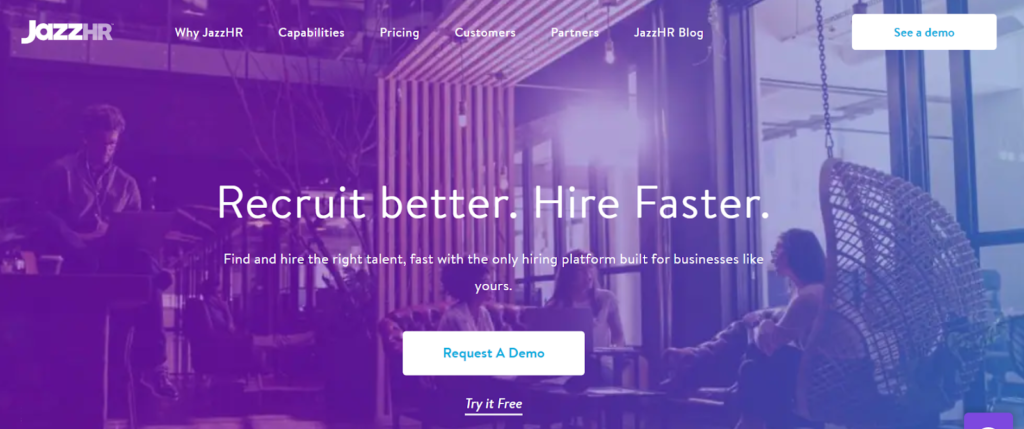
Where JazzHR Excels
Like Workable and BreezyHR, JazzHR is a standalone ATS. It handles end-to-end recruiting, from sourcing top candidates, assessing them, and bringing them onboard through a collaborative interview process.
I like it best for companies that are always hiring. No other ATS we looked at gives you such a deep toolkit to build out a constant recruiting strategy. Your HR team won’t have to switch the way you do business to start using JazzHR today:
- Deep feature sets: Screening, assessments, reporting, automations, ranking, approvals–JazzHR gives you a solid range of options everywhere an ATS should be strong.
- Customizable workflows: While some platforms let you tweak the journey a candidate takes, JazzHR lets you build it your way from start to finish.
- No registration requirement for applicants: If you’re always accepting applications, why not make it as easy as possible? With JazzHR, applicants don’t even have to create an account to apply.
Jazz hits all the high notes of a modern ATS that allows for effortless collaboration between stakeholders to ensure that the best candidates are moving forward.
“Let’s say a hiring manager is reviewing an application, they want me to do a screen interview,” an HR manager at a 200 person company told us. “They can @mention me and say, “Hey, can you specifically ask these questions because I really like their resume, but I’m a little concerned about this area.”
For her, it was critical that all conversations like this were tethered to an individual candidate profile. She’s constantly looking at resumes. “Of course I’m talking to multiple people at once,” she explained, “so it just kind of keeps me more organized in that regard.”
And JazzHR is not one of those cookie-cutter platforms that only works so long as you color within the prescribed lines. Far from it.
You have complete control over the hiring process for every position you create, and you can design a workflow that makes sense for your organization without worrying about trying to squeeze your processes into a one-size-fits-all solution.
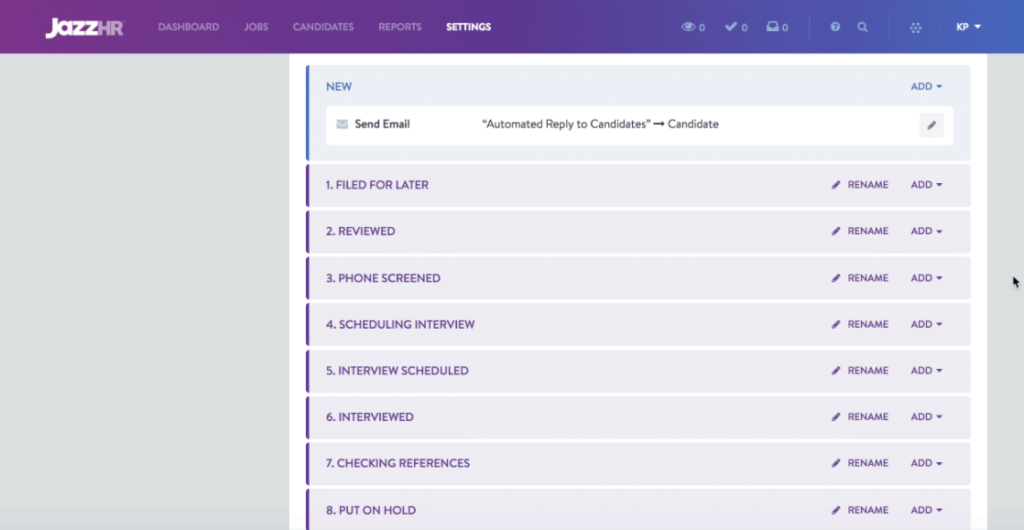
Users we spoke with felt confident building out their own workflows.
“Our process is different than whatever other company is using it,” said one JazzHR user. She really liked that she could “have it specifically set up based on what we do in our process. And we can also create different workflows for different jobs.”
As she explained, “the IT team is very different from the design team,” and they need different assessments and workflows. Not only could they create specific assessments for each positioning, “when we go into the backend and look at our candidate workflow for each job, we can easily see where they’re at in the process and make sure that we don’t miss anything.”
People that are hiring frequently can save time and minimize mistakes by having a workflow set up for each position. Candidates know what they need to submit and reviewers have a complete picture at every stage.
One slightly unusual feature of JazzHR is that candidates don’t have to create a profile in order to submit an application.
One user we talked with thought this made JazzHR a lot more appealing to potential candidates. “You do find with other ATSs that candidates have to create an account,” she said. “And it’s kind of a tedious process if you’re applying to multiple roles. So we just think it is easy for people to apply because Jazz isn’t set up that way.”
This did create some extra legwork on the back end, because the system couldn’t automatically detect the same person applying for multiple jobs. That said, because people are applying to specific roles with custom workflows, she was easily able to “detect the [duplicate] email addresses and we can easily merge candidates in that situation.”
| PROS | CONS |
| Deep feature set | No JazzHR mobile app |
| Highly customizable workflows | Not as easy for new users on day one |
| Applicants don’t need to create account | Unusual resume database |
Where JazzHR Can Improve
JazzzHR is going to work for a range of small business use cases just fine, but there are a few aspects that you’ll want to know ahead of time.
- No mobile app: You can access the web portal via your mobile browser, but there’s no app like there is for BreezyHR.
- Steeper learning curve: It’s not like you need technical support on speed dial, but you should plan more training for your employees than some of the other “deploy today” ATS options.
- Mixed reviews for resume database: the way JazzHR stores candidate profiles is a little different than your typical talent pool. We talked to users who loved it, but others who had to find workarounds.
The JazzHR web portal is great, and much can be handled right out of your inbox, but the lack of an app is going to bother some folks. With BambooHR’s or BreezyHR’s apps, your teams are going to be able to swipe through candidates and keep the pipeline flowing even when they’re on the go.
With JazzHR, you’re stuck in the web browser on your mobile device, which never works quite as well.
And as you might expect, a higher degree of customizability makes the platform a little less approachable for new users. One JazzHR user, for example, mistakenly changed the global notification settings when she was trying to turn off just hers. It did not go well, as people across her company stopped receiving important notifications without knowing why.
Looking back she wished she’d received a little more training. “I just did a very casual walkthrough with a coworker who had also been using Jazz for longer,” she said. “I feel like it is easy to use. I think it’s intuitive…. [but] a little bit of training would’ve just made our usage of it just like excellent.”
BreezyHR, on the other hand, seemed like something new users were picking up and running with on day one.
Another thing that not everyone was thrilled about was the resume database set up in JazzHR. Because candidates don’t have to create a profile, the backend allows you to see every candidate who has applied.
An HR manager working for a 500-person nonprofit organization told us that it was “a bit overwhelming” to see every single candidate in the same pool for 30 open positions.
“It can be really distracting to see all the other candidates and all of the other resumes,” she said. And the process of identifying promising candidates for future roles “is kind of more of a manual process for us.” Users on other platforms did not mention this issue.
JazzHR Pricing
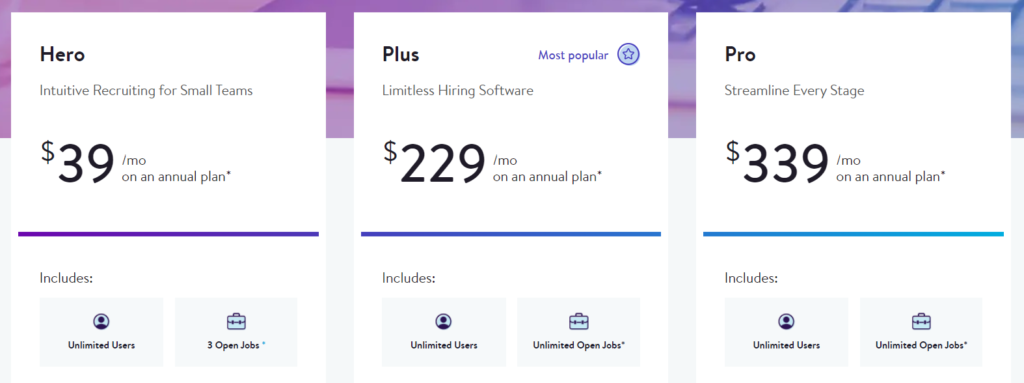
The pricing for JazzHR plans shown above is the cost per month with an annual subscription. According to the company, These are plans aimed at “employers with less than 500 employees who are recruiting to hire employees at their own company, for a single location.”
They offer additional plan options for RBOs (recruitment-based organizations) and companies with more high-volume hiring.
We’re going to focus specifically on JazzHR’s SMB plans here, though you can follow the links to learn more about the other offerings.
The Hero plan is a low-cost, trimmed-down version of JazzHR’s full ATS. You’re not going to get as many tools to build out workflows or assess candidates, but you get everything you need to track several hires.
Hero starts at $39 per month and allows you to post three open jobs. Additional jobs start at $9 extra per month. As I said, you don’t get the full ATS, but at that low volume, you probably won’t be missing much.
Hero does have customizable workflow stages, role-based access control, LinkedIn Recruiter integration, email sync, and allows you to post to a range of free and paid job boards.
The Plus plan, which starts at $229 per month, comes with the full ATS. You get all the interview and assessment tools I talked about in the review (those don’t come with Hero), as well as many of the essential reporting and compliance features.
The Pro plan, which starts at $339 per month, comes with eSignature integration, custom report builder, offer letter templates, and Zoom integration, which is an add-on for Plus.
Also note that you get onboarding assistance with Plus and Pro, which may be very helpful for companies trying to set up unique hiring workflows for the first time.
Bottom line: So long as you budget in a little more time to tweak everything and ensure that people receive adequate training, JazzHR will work exceptionally well for companies that are always hiring.
The Review Process
To find the best ATS options, the Quick Sprout team spent a month researching the top products on the market.
Then we spoke with active users of each ATS that made our list to find out how well each one worked in real life.
What It Took To Be Included
As a baseline, any ATS we included allows you to:
- Post open roles and positions online
- Parse resumes to create a searchable candidate database
- Track applicants through a hiring pipeline
- Coordinate with candidates and stakeholders in the process
- Finalize paperwork and sign the candidate
While some products don’t include this full range of functionality with their freemium or entry-level plans, each one makes them all available within the platform.
This was really important to me, as you don’t want your teams or applicants bouncing back and forth between accounts to accomplish different steps of the process. A single system is more efficient on the backend and more professional on the front.
I also wanted to include a range of options that would work for startups and small businesses, as well as those that are beginning to scale up.
To that end, I only included one full-service HR company (BambooHR), though many of the best HR software platforms, like Namely, include really great ATS.
Not everyone wants to completely retool their HR processes simply to level up their recruiting game. That’s why you’ll see mostly trim options on this list that excel in applicant tracking, and don’t expect/force you to purchase a larger system down the road.
To further narrow down the top list to the very best applicant tracking software, we prioritized:
- Solid online reputation: The ATS has to have a large and favorable online presence across public review sites, social media, and specialist forums for HR, recruiting, staffing professionals. You can be sure that the software is trusted, secure, and already helping people in your situation.
- Accessibility:: The typical user should feel confident navigating the ATS, customizing workflows, troubleshooting basic issues, and so on. Training can always be beneficial, but you certainly won’t need an IT team to support recruiting.
- Strong in-platform communication channels: Email, chat, phone, video–users shouldn’t have to log into different platforms to follow a conversation with an applicant or share interview impressions with a colleague in another department. Every part of every conversation with every applicant should be logged in the system so you’re not searching for information.
- HR features and integrations: Users should be able to connect their ATS to the rest of their business with minimal effort. You can handle a lot of the hiring-adjacent tasks within most of my recommendations. Where they are limited, they have integrations with HRIS, payroll, etc.
- Free trials: With something like an ATS, you really need to see how it drives before committing to a purchase. You won’t have to sign a contract to find out which of these ATS options has the best fit with your workplace.
Who We Interviewed
To really get a sense of how an ATS works, you have to actually hire people. Demos are fun, free trials do let you see how a product works, but we were interested in hearing how well these products worked over months and years.
The ATS users we spoke to fell into three pretty distinct categories:
- Corporate recruiters: HR professionals tasked with filling open roles at the company they work for.
- Agency recruiters: Professional recruiters tasked with filling open roles at other companies
- Hiring managers: Skilled professionals tasked with filling new roles on their team.
The hiring managers were sometimes pretty new to HR. They were hiring people for their team because they knew the skills that really mattered. The corporate and agency recruiters tended to be more experienced professionals in the space.
Beyond the similar roles of the folks we talked with, there were not a lot of other unifying characteristics. Organization sizes ranged from 2-500+ and operated in a diverse range of industries: event management, IT, sports, education, nonprofit organizations, etc.
What I Learned Choosing the Best Applicant Tracking Software
Getting the best candidates on your teams is too important to rely on spreadsheets or your inbox alone. Without a consistent, dependable, objective system in place, you wind up relying on chance to deliver your next quality hire.
These tools helped everyone we spoke with. A lot. They couldn’t imagine going back to recruiting outside of an ATS.
Many happy users, however, had experiences with other ATS tools that weren’t as good or didn’t fit as well with their organization. You have to be thoughtful about which one is going to map on to your processes.
Here’s what I learned from a month of research and interviews with active users of applicant tracking software.
You Don’t Need To Hire A Lot To Benefit From ATS
I don’t think I understood how helpful and accessible ATS could be for small businesses when I started this post.
Sure, if you have dozens or hundreds of open roles I got how dedicated software could streamline the process. Our research with users confirmed that ATS is critical for hiring 20 people in a round or 200 people in a year.
But we were surprised by how helpful it was for companies that only needed the occasional hire:
- It’s within SMB budget: You’re not paying thousands of dollars to start using ATS.
- It’s easy for non-specialists to use: Obviously a seasoned recruiter is going to have an easier time than someone making their first hire, but there isn’t a lot of training required to start using an ATS.
- It deploys quickly: You can start searching and sorting right now with most of my top picks, you won’t need to retain a developer to set up or babysit your ATS.
- It works well for SMB scope: if you only hire a few people or have a few open roles, ATS can still save you hours of work and weeks of headaches.
Because ATS is cheaper, easier to use, and less complex to set up than it used to be, it makes a lot more sense to start using these products, even if you only hire a handful of people each year.
We talked to one HR manager who used Workable on a pay-per-job basis. With 40 people total at the company, they only needed an ATS every so often. “We didn’t know how many jobs we would have,” she told us, “so we couldn’t really commit to a whole huge system.”
She was happy with the setup because they avoided monthly fees and annual subscriptions, yet the Workable platform was theirs to use whenever they needed it.
And if you find yourself needing to hire more often or deal with more turnover as your company grows, often you can simply upgrade your plan with your current ATS, rather than having to find a whole new one designed for bigger companies.
BreezyHR, for example, is fine for hiring the occasional person–you may even be able to use their free plan for this.
But when you’re hiring a lot, BreezyHR grows with you. “I’ve been on hiring teams and used it to help funnel candidates [through] hiring for various roles,” said the HR manager at a 50-person company that’s grown a lot in the last year.
“I don’t know how many we’re down to now, but we had about 20 open roles,” she said. “We’re still hiring for a lot more. And so trying to keep all of that in order would be impossible without software like Breezy.”
Getting Many Candidates Is Good, Getting Good Candidates Is Better
Every ATS I looked at comes with job board integrations and syndication options to broadcast your open positions to a large audience. We excluded any ATS that made this task cumbersome in any way.
Still, each one offers a different set of tools to help companies get the most promising candidates to start the application process. In research and interviews, we investigated:
- Job Board integration and syndication: how many different job boards and digital venues could you post jobs?
- Job board management: How easy was it to keep track of where applicants were coming from. Could you tell where spending money was having an ROI?
- Attracting top talent: Were users finding the right candidates?
- Screening unqualified candidates: Were users flooded by applicants without the relevant skills and experience? How easy was it to screen them?
If you need more than the standards (LinkedIn, GlassDoor, ZipRecruiter), I’d pay very close attention to exactly which job boards you’ll be able to connect to within the platform.
It’s a simple check to figure out which ATS offers the largest selection of job boards–BambooHR offers a few essential ones built-in, whereas Jazz has 27 free/paid job boards integrations and 8 job sourcing integrations. Workable, meanwhile, offers more than 200 job board integrations, which was by far the most of any ATS we looked at.
I know it’s common sense, but the job board selection mattered in concrete ways to the users we spoke with.
“I would say the best thing is how Jazz just automatically syndicates out to so many different job boards,” one user told us. “We would just be getting the right people applying because they were finding us.”
Contrast that to the BambooHR user who told us that they weren’t able to get on the right job boards with BambooHR’s built-in integrations.
“We wanted a greater reach,” they said, to get their posts on local job boards “like chambers of commerce and colleges.” Fortunately, they were able to use an add-on (Applicant Pro) that works with BambooHR to allow you to post jobs in more places.
But it’s not just about getting the word out. The ability to screen the resumes you get becomes really important when you have postings all over the web.
“I think there’s some truth in applying to jobs that are a little bit out of your reach,” one HR manager who switched to Workable told us, “But it’s being taken to an extreme.” He laid out how he had to constantly sift through hundreds of resumes on his old ATS that had no relevant experience. Now that he’s on Workable, he’s only looking at much better quality resumes.
Another seasoned HR manager working with JazzHR told us how easy the platform made it to find the right people. “We had a very targeted set of skills we were looking for,” she said, “and that is actually what made filtering people out very easy.”
Part of their success she attributed to the quality of the job description they wrote–it captured the role and responsibilities very well–but she said JazzHR made the whole experience better. “The platform doesn’t get in the way,” she said, “That’s a great thing to say about the platform because you shouldn’t notice it, it shouldn’t be an obstacle to your search at all.”
As you think about what features are really going to help you source the best candidates, your job board selection is important, but it’s not the whole story. What tools are you getting to screen candidates or create the job descriptions they read as they decide whether your company is promising?
Let The ATS Make Your Hiring Process Easier…
A good ATS makes it easy for companies to move qualified applicants through a transparent, predictable hiring process. It makes the back office more efficient and really puts your best foot forward in the eyes of candidates who can afford to be discerning.
These are the four key areas we looked at when deciding which ATS would actually help bring order to the hiring process:
- Intuitive interface: Can people learn how to navigate the dashboard themselves? Is it easy to track candidates and identify next steps?
- Collaboration with all stakeholders: Is it easy to communicate with candidates, anonymously if need be? Can all parties with a stake in the hiring decision share impressions and comments?
- Individual customization: Were users able to tweak and customize hiring workflows to suit their organization’s needs and values?
- Automation: Did users save time or otherwise benefit from automating steps in their hiring process?
Everyone I talked to really liked the user interface of their ATS. I expected people to have a lot more complaints, but for the most part, no one had any trouble using the systems well.
“It’s simply that easy,” said an HR manager who uses BreezyHR. She walked us through the visual pipeline they use to push promising candidates forward.
“Say candidate A looks like a good candidate to move forward to a phone screen. You just drag candidate A over to the phone screen column.” And as soon as she dragged the candidate over, it triggered the next set of steps. Many of these tasks are automated by triggers you set, and it’s all done right in BreezyHR.
My takeaway is: if an ATS is even slightly cumbersome, you’re probably not using the best option available.
That said, JazzHR has a slightly steeper learning curve compared to BreezyHR, but you can customize your workflows from the ground up.
We talked with one HR manager who used JazzHR that absolutely relied on the platform’s ability to create completely different hiring workflows for different positions. This included completely unique stages, assessments, and sets of people who needed to be looped in. On JazzHR, setting this up was all point and click.
You could potentially set up something like this in BambooHR or BreezyHR, but you’ll be integrating third-party assessment apps. You may also struggle to implement the workflow you want, whereas JazzHR gives you the freedom to create from a blank slate.
…And Your Selection Process, Too
As hard as it is to find the top candidates, choosing the best from a short list is even harder. You don’t need anything fancy, but there are several key areas you need to lock down. We considered:
- Assessments: Were users able to create and administer questionnaires, skills tests, and video interviews to separate top candidates?
- Ranking and Comments: Could users assign meaningful rankings and leave notes? Did users feel like feedback was useful and accessible?
- Talent pool management: Could applicants be saved for later or recommended for different positions internally?
We definitely found that users didn’t need to introduce a lot of complexity into the ranking process. Most were fine with the default five-star rankings.
As one JazzHR user explained, the workflow was pretty straightforward. “We had a couple of standard questions that we asked [candidates],” she said. She’d review the answers, check out the resume if they seemed good, “and then I would star the person, or leave a comment like, oh, I don’t think this is the right one.”
Another JazzHR user set up their own system using hot, cold, and warm dispositions for candidates. “So rather than using the stars, we found it more helpful to just sort candidates by putting them in one of those three piles,” she said.
They also use a “please screen” disposition, “so if someone absolutely has to talk to this person, they can go ahead and put someone in there.” Once that happens, the manager receives a notification to set up an interview right away.
As you can tell, both these JazzHR users were able to make the ATS work for them. It’s an unusually customizable platform, however. Most of the other users we talked to were just using the default star rankings.
BreezyHR, on the other hand, received high marks for its easy talent pool management. As one user explained, it was extremely easy to retain a promising candidate who wasn’t a perfect fit for the role at the movement.
“It’s never an easy thing when there are so many candidates,” said the BreezyHR user, talking about having to turn good people down. But using BreezyHR, she was able to retain contact info and eventually find a fit.
”It makes the most sense,” she said, “because someone’s already indicated interest in the company.”
BambooHR users really liked the talent pool features as well. “The dropdowns within the ATS make it really easy to manage all of your applicants,” said one HR manager talking about how easy it was to store critical information.
BambooHR made it easy to move one applicant to another open role.“You could drop them into a talent pool and kind of hold onto their information,” he said. “Very intuitive. They thought it through very well, as far as what does a recruiter need and how do they function?”
You may not need a very fancy toolkit, but you want to make sure that your HR managers and teams have the visibility they need–both at the level of assessing individual candidates and overall talent pool.
Conclusion
Applicant tracking software can have a huge and immediate impact on how quickly your company finds good hires. After talking with users of the top products on the market, I feel very confident about how much of a difference these tools can make.
Here are my top four recommendations for ATS, all of which you can start using right now:
- BambooHR – Best for HR Teams that Handle Recruiting Themselves
- Workable – Best for Small Business Talent Acquisition
- BreezyHR – Best for Lowering Your Cost to Hire
- JazzHR – Best for Keeping an Active Candidate Pipeline
Follow the links to learn more about each product, or stay on Quick Sprout to learn more about some of the software that neighbors ATS in the market, like:
Or you can check out some of our helpful hiring and recruiting guides:
What do you use for applicant tracking software?
from Quick Sprout https://ift.tt/3fvBguO
via IFTTT
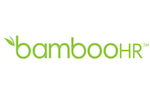
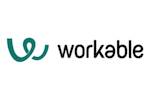

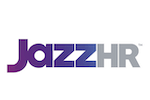
No comments:
Post a Comment